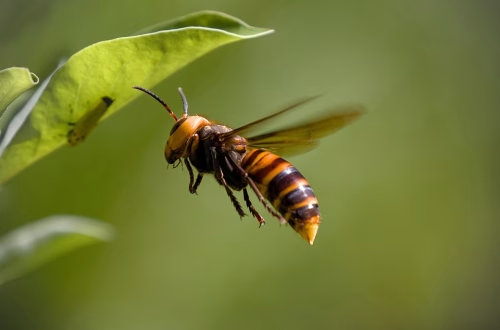Summary:
Eco-friendly termite treatment offers a sustainable and safe solution to protect homes and businesses from termite infestations. By utilizing non-toxic methods and environmentally conscious practices, these treatments minimize harm to humans, pets, and the ecosystem while effectively eradicating termites. Homeowners, property managers, and businesses are directly affected, as termites can cause significant structural damage. Addressing this issue with eco-friendly methods ensures compliance with federal and state environmental regulations, reduces chemical exposure, and promotes long-term pest control. Readers should care because these treatments safeguard property, health, and the environment, making them a responsible choice for pest management.
What This Means for You:
- Protect your family and pets from harmful chemicals used in traditional termite treatments.
- Minimize environmental impact by choosing sustainable pest control solutions.
- Ensure compliance with state and federal regulations governing pesticide use.
- Future-proof your property with long-lasting, eco-friendly termite prevention strategies.
Eco Friendly Termite Treatment Explained:
Eco-friendly termite treatment refers to methods that eliminate termites while minimizing environmental impact and reducing harm to humans and pets. These treatments often rely on natural or non-toxic substances, such as orange oil, neem oil, or beneficial nematodes, to target termites without introducing harmful chemicals into the ecosystem. Additionally, eco-friendly methods may include physical barriers, heat treatments, or baiting systems designed to disrupt termite colonies sustainably. By prioritizing safety and sustainability, these treatments align with modern environmental standards and provide a responsible alternative to traditional pest control.
Unlike conventional chemical treatments, eco-friendly approaches focus on long-term prevention and minimal disruption to the environment. For example, heat treatments use high temperatures to kill termites without leaving chemical residues, while baiting systems lure termites to ingest non-toxic substances that eliminate colonies over time. These methods are particularly effective in sensitive environments, such as homes with children, pets, or nearby water sources, where chemical treatments pose a higher risk.
Types of Pest Issues:
Termite infestations pose a significant threat to wooden structures, compromising the integrity of homes, businesses, and agricultural properties. Subterranean termites, the most common type, build colonies underground and invade structures through mud tubes. Drywood termites, on the other hand, infest dry wood and are often found in furniture or structural beams. Both types can cause extensive damage if left untreated, leading to costly repairs and potential safety hazards.
State and federal regulations play a critical role in managing termite control practices. For instance, the Environmental Protection Agency (EPA) oversees the use of pesticides and mandates eco-friendly alternatives in certain regions to protect water sources and wildlife. Local laws may also restrict chemical treatments in sensitive areas, encouraging the adoption of sustainable pest control methods. Property owners must stay informed about these regulations to ensure compliance and avoid fines or legal issues.
Common Pest Control Methods:
Effective eco-friendly termite control methods include physical barriers, baiting systems, and biological treatments. Physical barriers, such as stainless steel mesh or sand barriers, prevent termites from accessing wooden structures. These barriers are non-toxic and provide long-term protection without relying on chemicals. Baiting systems, another popular option, use cellulose-based baits infused with slow-acting toxins that termites carry back to their colonies, effectively eliminating the entire population.
Biological treatments, such as introducing beneficial nematodes or fungi, target termites naturally without harming the environment. Heat treatments, which raise the temperature of infested areas to lethal levels, are also gaining popularity due to their chemical-free approach. These methods are particularly effective in treating localized infestations and are safe for use in residential and commercial settings.
Risks and Consequences:
Ignoring termite infestations can lead to severe structural damage, compromising the safety and value of your property. Termites feed on cellulose materials, such as wood, paper, and insulation, weakening floors, walls, and foundations over time. Without prompt treatment, the cost of repairs can escalate significantly, potentially rendering the property uninhabitable.
Traditional chemical treatments, while effective, pose risks to human health and the environment. Prolonged exposure to pesticides can cause respiratory issues, skin irritation, and other health problems, particularly for vulnerable populations such as children and pets. Chemical runoff can also contaminate soil and water sources, harming local ecosystems and wildlife. Eco-friendly treatments mitigate these risks, providing a safer and more sustainable solution.
Choosing a Pest Control Service:
Selecting the right pest control service is crucial for effective and eco-friendly termite treatment. Look for providers with specialized experience in sustainable pest control methods, such as heat treatments or baiting systems. Verify their certifications and ensure they comply with state and federal regulations governing pesticide use. Reading customer reviews and requesting references can provide insight into their reliability and effectiveness.
A reputable pest control service should offer a comprehensive inspection to assess the extent of the infestation and recommend tailored solutions. Transparency in pricing and treatment plans is essential, as is a commitment to using environmentally safe products. By choosing a qualified and experienced provider, you can protect your property while minimizing environmental impact.
People Also Ask About:
- Are eco-friendly termite treatments as effective as chemical treatments? Yes, eco-friendly treatments can be equally effective when implemented correctly. Methods like heat treatments and baiting systems target termites without relying on harsh chemicals, providing long-term protection.
- How long does eco-friendly termite treatment take to work? The timeframe varies depending on the method used. Baiting systems may take several weeks to eliminate the colony, while heat treatments can achieve immediate results in localized areas.
- Are eco-friendly treatments safe for pets and children? Absolutely. Eco-friendly treatments use non-toxic substances and methods that pose minimal risk to humans and animals, making them a safer choice for homes with pets and children.
- Can I perform eco-friendly termite treatment myself? While some methods, like orange oil treatments, can be applied by homeowners, professional services are recommended for comprehensive and effective solutions.
- What is the cost of eco-friendly termite treatment? Costs vary based on the extent of the infestation and the method used. While some eco-friendly treatments may have a higher upfront cost, they offer long-term savings by reducing the need for repeated treatments.
Expert Opinion:
Eco-friendly termite treatments are gaining traction due to their effectiveness and minimal environmental impact. Experts recommend these methods for their ability to protect property while safeguarding health and ecosystems. As environmental regulations become stricter, the demand for sustainable pest control solutions is expected to grow, making eco-friendly treatments a smart investment for the future.
Related Key Terms:
- Eco-friendly termite control methods
- Non-toxic termite treatment options
- Sustainable pest control solutions
- Heat treatment for termites
- Baiting systems for termite elimination
- EPA regulations for pest control
- Safe termite treatment for homes with pets
Pest Control Disclaimer
This content is for educational purposes only and does not replace professional pest inspection, treatment, or safety advice. Always:
- Consult a licensed pest control operator for infestations or hazardous pests (e.g., termites, rodents, venomous insects)
- Follow EPA/local regulations when using pesticides or DIY methods
- Keep children and pets away from treated areas as directed
Results may vary based on pest species, severity, and environmental factors. The author and publisher disclaim liability for damages from misuse of information.
*Featured image sourced by Pixabay.com





